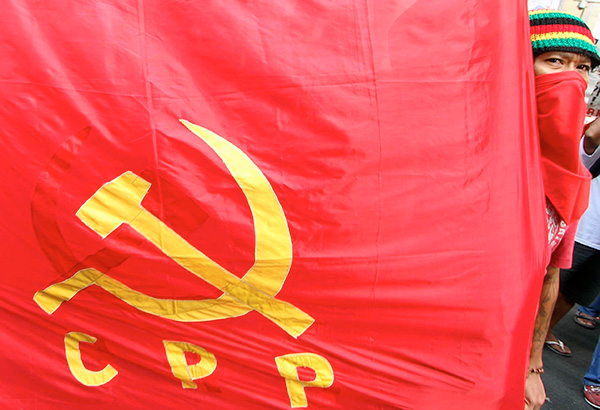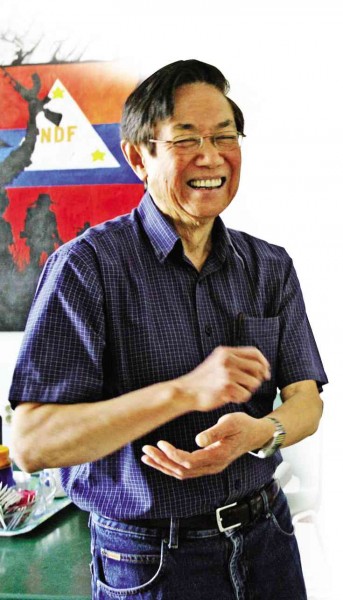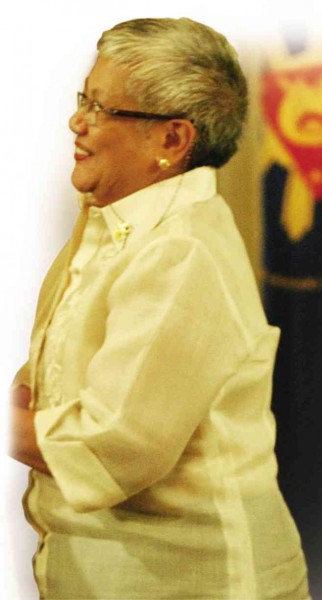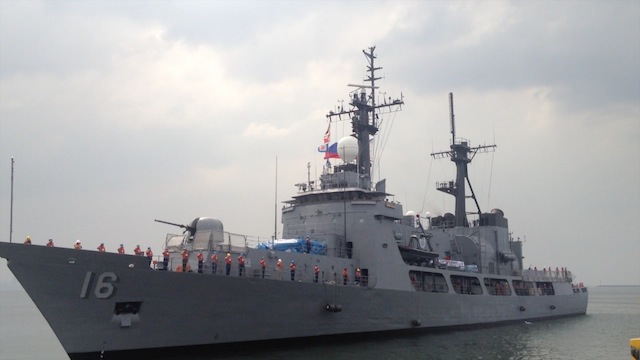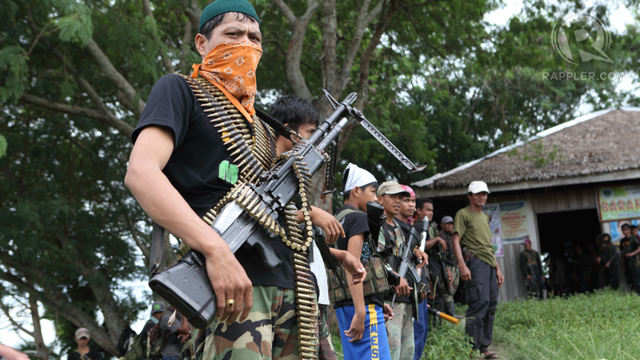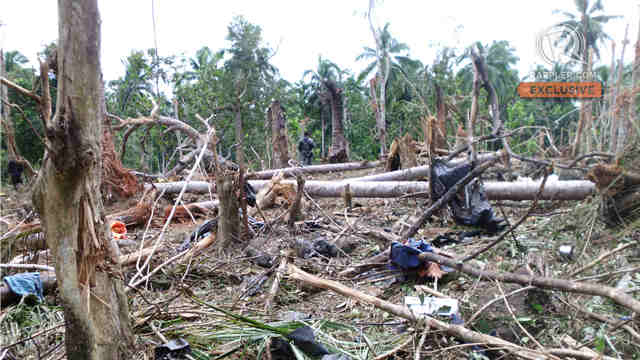Opinion piece in the Philippine Daily Inquirer (Jan 25):
Prospects for talks with NDF(by Soliman M. Santos, Jr.)
The hugely successful visit of Pope Francis, which took the whole country by storm, still reverberates. Will the surging waves of goodwill, as well as calls for prophetic action, lead to a resumption of peace talks with the National Democratic Front of the Philippines (NDFP) soon?
The best sign that something is brewing on the NDFP peace front was Inquirer’s banner headline last Dec. 28 that “Joma looks forward to meet with P-Noy.” This was right after Jose Maria Sison, chief political consultant of the NDFP and founding chair of the Communist Party of the Philippines (CPP), which leads the New Peopleís Army (NPA), said both parties might resume talks probably soon after Pope Francis’ visit.
Given the past long track record of more-off-than-on and more-failed-than-successful peace talks, the questions that come to mind boil down to three:
What really, in terms of peace talks, is afoot in the remaining one-and-a-half years of the Aquino administration?
What are the prospects that something good enough–in terms of tangible gains and moving that process forward–will come out of any new talks?
What needs to be done to push these talks forward?
The recent “excitement” on the NDFP side about a possible resumption of talks soon appears to be a change from the previous Joma/CPP position of waiting for a new administration to resume peace talks.
Private emissaries
It was the Philippine government (GPH) that took the initiative to explore this through its “private emissaries” or “friends of the peace process” (notably former government peace negotiators Rep. Silvestre Bello III and Hernani Braganza) making “informal contact” with the NDFP since July 2014.
They are “shuttling back and forth between the two parties to explore possible parameters for restarting talks at the earliest possible time, but nothing is final,” a GPH source said.
Why this new GPH? Presidential Adviser on the Peace Process Teresita Quintos-Deles speaks of “President Aquino’s policy to pursue the peace process as a major agenda of his administration.”
The peace settlement with the Moro Islamic Liberation Front (MILF) has become the cornerstone, which for President Aquino has taken historical legacy proportions.
Former NDFP chief peace negotiator Satur Ocampo sees the new GPH as Mr. Aquino seeking also “to redeem the unrealized vow that his mother, the late President Corazon Cojuangco-Aquino, made in 1986 to end the protracted armed conflict between the government and the Left revolutionary forces” through peace negotiations.
If we take what has been the framework agreement for these peace negotiations since 1992, The Hague Joint Declaration, they are being held “to resolve the armed conflict.”
Common goal
The “common goal” is “the attainment of a just and lasting peace.”
What does this hold for the ordinary Filipino and for the economy?
The people and the economy will benefit from the peace dividends. The ordinary folk, especially in the countryside zone of war, can expect to at least go on with their day-to-day lives of eking out a living without getting caught in the crossfire. And needed socioeconomic reforms can be instituted as a result of a final political settlement.
Root causes
Such reforms are ultimately aimed at addressing the root causes of the armed conflict and social unrest. Aside from cutting the considerable human and economic costs of the conflict, a peace settlement would allow much more resources to be devoted instead to socioeconomic development that should benefit the country, especially the poor. This is why it is worth trying to give peace a chance.
Why the change from the previous Joma/CPP position of waiting for a new administration to resume peace talks especially at the formal level?
Perhaps, aside from its telegraphed tactical considerations, it is really more for the NDFP to prepare some ground for such talks in the next administration.
Some observers note that this comes after the March 2014 capture of in-country CPP leaders Benito and Wilma Tiamzon who were said to take a harder line than Joma on the peace talks.
Joma, to whom the CPP has entrusted the peace talks, now appears to have more CPP room to maneuver on this front, as shown by recent statements issued under his name in the media for public consumption, as distinguished from major CPP policy statements like its 46th anniversary statement of Dec. 26 believed drafted by him under the name of the CPP for the guidance of its leadership and entire membership.
Too late for final settlement
Both the government and the NDFP are agreed that there is not enough time for a final peace agreement or political settlement before the end of Mr. Aquino’s term in June 2016.
Joma says “there is little time left to make all the agreements up to the final peace agreement” but “I think there is ample time to arrive at a Comprehensive Agreement on Social and Economic Reforms (Caser) and a Truce and Cooperation Agreement on the basis of a general declaration of mutual intent.”
Sen. Antonio Trillanes IV has pointed out that if talks would at all progress, it would be in the next administration where “there would be a clean slate … new personalities and a new beginning.”
Otherwise, he said it would result in a half-baked agreement. Besides, the “election fever” for a new presidential administration, when all serious business stops, will kick in by the second half of 2015 and impinge even on existing peace processes. The government has reportedly decided to give the talks until June 2015 to produce significant results.
What are the prospects for the peace talks?
The question of prospects for significant results refers to a phase of new informal talks that, if they get underway, could take the whole first half of 2015. This necessarily must have scaled down objectives.
Doable, time-bound
For the government, Deles has stated these parameters. “We believe, however, that for the peace talks to prosper, we need to pursue an agenda that is doable and time-bound, with agreements that are realizable within the remaining term of President Aquino. More importantly, the peace talks must heed our people’s call for an end to violence. We view peace negotiations as the beginning of sincere dialogue toward resolving the problems of the country without resorting to the use of arms,” she said.
There is a strong government accent on the need to provide people with security and respite from violence–if possible end the armed conflict. The government seeks a long-term truce/ceasefire during the entire process of the peace talks, especially the formal talks, should these resume even before the end of the Aquino administration.
There is some ground-level and humanitarian basis for a ceasefire, but the government pounding on this reinforces the CPP’s beef in its 46th anniversary statement about “the reactionary government and its current officials who regard the negotiations as the means for the capitulation and pacification of the revolutionary forces and the people.”
The NDFP will likely reject a ceasefire that it considers too long (that in its perception retards the primary armed struggle) and is not coupled with substantive achievements in the talks. The thing is, the government has not presented its own clear “agenda that is doable and time-bound, with agreements that are realizable within the remaining term of President Aquino.”
Joma at least proposes achieving a Caser and/or a “general declaration of mutual intent”–but which, if marked by “constructive ambiguity,” can later become another “document of perpetual division between the Parties,” as the GPH has already characterized The Hague Joint Declaration.
This is not helped by the CPP anniversary statement which telegraphed a tactical agenda of propaganda that serves its protracted people’s war strategy: “What is good about the peace negotiations is that the NDFP is able to broadcast the Program for a People’s Democratic Revolution and help bring about the victory of the revolution in the long run or before then help bring about truce and cooperation with a government that is not led by the Party but which adopts patriotic and progressive policies to deal with the severe crisis brought about by imperialism and reaction.”
CPP urgent tasks
This and other high-policy guidance in the CPP anniversary statement–including priority-numbered “urgent tasks” for “[2.] the people’s struggle to oust the Aquino regime” and to “[3.] intensify and advance the people’s war toward the stage of the strategic stalemate [for the umpteenth time] … by launching more frequent and sustained tactical offensives with occasional blows to the head of the enemy”–in turn reinforce the government’s current wariness and caution about the prospects of the peace talks. Nowhere is the latter set forth in the statement’s summary of 10 numbered “urgent tasks.”
In the nearly 25 years since The Hague Joint Declaration, the only substantive achievement has been the 1998 Comprehensive Agreement on Respect for Human Rights and International Humanitarian Law (Carhrihl), but its implementation has been stalled along with the main peace process.
There are many reasons for this undue lack of progress. For the most part and at its root are the mutually antagonistic frameworks which treat the peace negotiations as more tactical rather than strategic.
Mountain of distrust’
This raises nagging questions of sincerity and political will for the talks. The long negative experience on the war and peace fronts, including belligerency both in deeds and in words, with each other has aggravated the “mountain of distrust” between the parties.
What needs to be done to push the peace talks?
Trillanes’ point that confidence-building measures should be undertaken before any “P-Noy-Joma meeting” is a well-taken one. Deles says, “Professions of sincerity are no longer acceptable to a skeptical public….” The Hague Joint Declaration itself points to the need for “specific measures of goodwill and confidence-building to create a favorable climate for peace negotiations.”
Short of ceasefire
An arrangement, short of a ceasefire, would be ideal as a specific measure of goodwill (especially for noncombatants), but it is a contentious proposition to the NDFP (which treats it for the last stage “end of hostilities”). It should be doable for the peace process in the short period left for the Aquino administration. The arrangement can rebuild the shattered confidence between the parties through a more collaborative, flexible and effective implementation of the spirit and letter of the Carhrihl, which as an agreement indicates clear common ground between them in terms of “respect for human rights and international humanitarian law.”
This would produce tangible results on the ground in terms of addressing concerns arising from continuing armed hostilities (because there is still no ceasefire), ensure the protection of noncombatants and reduce the impact of the armed conflict on communities.
This, too, is a “path to peace” in general, as well as a bridge to progress for this peace process into the next administration. Then, hopefully, enough confidence between the parties would have been rebuilt to take it further forward.
Negotiation road map
The government appears to envision that one doable thing during the new informal talks, which are supposed to set the stage for the formal talks if ever, is reframing a negotiation road map. This is already long overdue given the sense of many that the NDFP peace talks are “going nowhere.”
This could be a new framework agreement, taking a leaf from the experience in the 2012 breakthrough in the MILF peace process. But the idea of a negotiation road map that is like a new framework agreement might run into an NDFP roadblock. The NDFP might insist on resuming formal talks only “on the basis of upholding, respecting and implementing [more than 10] previously signed agreements,” including the 1995 Joint Agreement on Safety and Immunity Guarantees (Jasig).
Jasig is the agreement most relevant to the nonsubstantive issue raised by the NDFP for the release of its “consultants” and other “political prisoners” detained by the GPH. The NDFP considers this an issue of government trustworthiness for respecting its signed agreements.
It might be noted that the 2012 Framework Agreement on the Bangsamoro specifically provided the phrase “without derogating from any prior peace agreements,” including two prior framework agreements in 1998 and 2001, but still moving forward based on a new framework.
Outside the box
A better framework, one that is more viable and developed, should help move the peace talks forward. As has been said in the MILF peace process, “If neither party in the negotiations thinks outside the box, all they would arrive at is a constant impasse.”
The “box” is the Constitution, but it could also refer to ideology and even “prior peace agreements.” Says another peace observer, “Both sides [in the NDFP peace process] might have lost some perspective after going round in circles for so many years,” so that a new framework agreement is now called for.
Finding that new framework, or at least what court-annexed mediators call “zones of possible agreement,” is where ongoing efforts of supportive civil society peace advocates of diverse political persuasions under the Citizens Alliance for Just Peace (CAJP) can help.
We are referring to CAJP’s modus of study sessions on key issues relevant to the talks. These study sessions, which are mainly for developing a shared understanding of the peace process, including other country experiences, can themselves further develop toward being tapped for actual problem-solving inputs for the peace negotiations.
The lessons learned and the confidence built among politically diverse peace advocates can also have a ripple effect on the peace negotiators and leaders of both sides with whom the advocates have their own lines.
The persistence of civil society peace advocates, as well as of the prestigious third-party facilitation of the Royal Norwegian Government, are among the few sources of hope that the NDFP peace process still has going for it.
It behooves all concerned, especially the leaders of both sides, to draw valuable guidance from various aspects of the current phenomenon called “the Pope Francis effect” that resonates with his Filipino mass base. This has implications also for the armed struggle/conflict and the peace process/agenda.
After all, it was a St. Francis of Assisi who prayed “Lord, make me an instrument of your peace …”
[
Soliman M. Santos Jr. is a human rights lawyer and peace advocate, whose initial engagement with the peace process was in Bicol with the first GRP [government]-NDFP nationwide ceasefire in 1986. He is currently presiding judge of the 9th Municipal Circuit Trial Court of Nabua-Bato, Camarines Sur.]
http://opinion.inquirer.net/81984/prospects-for-talks-with-ndf

